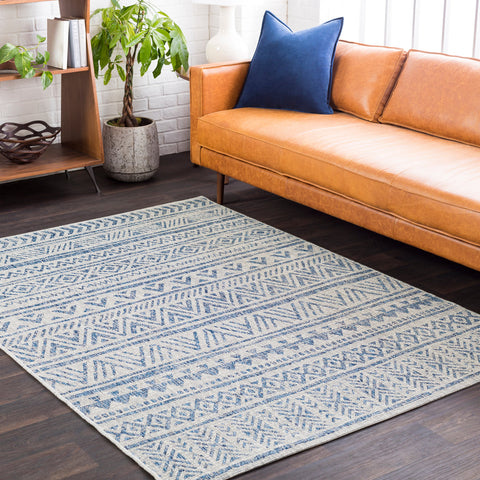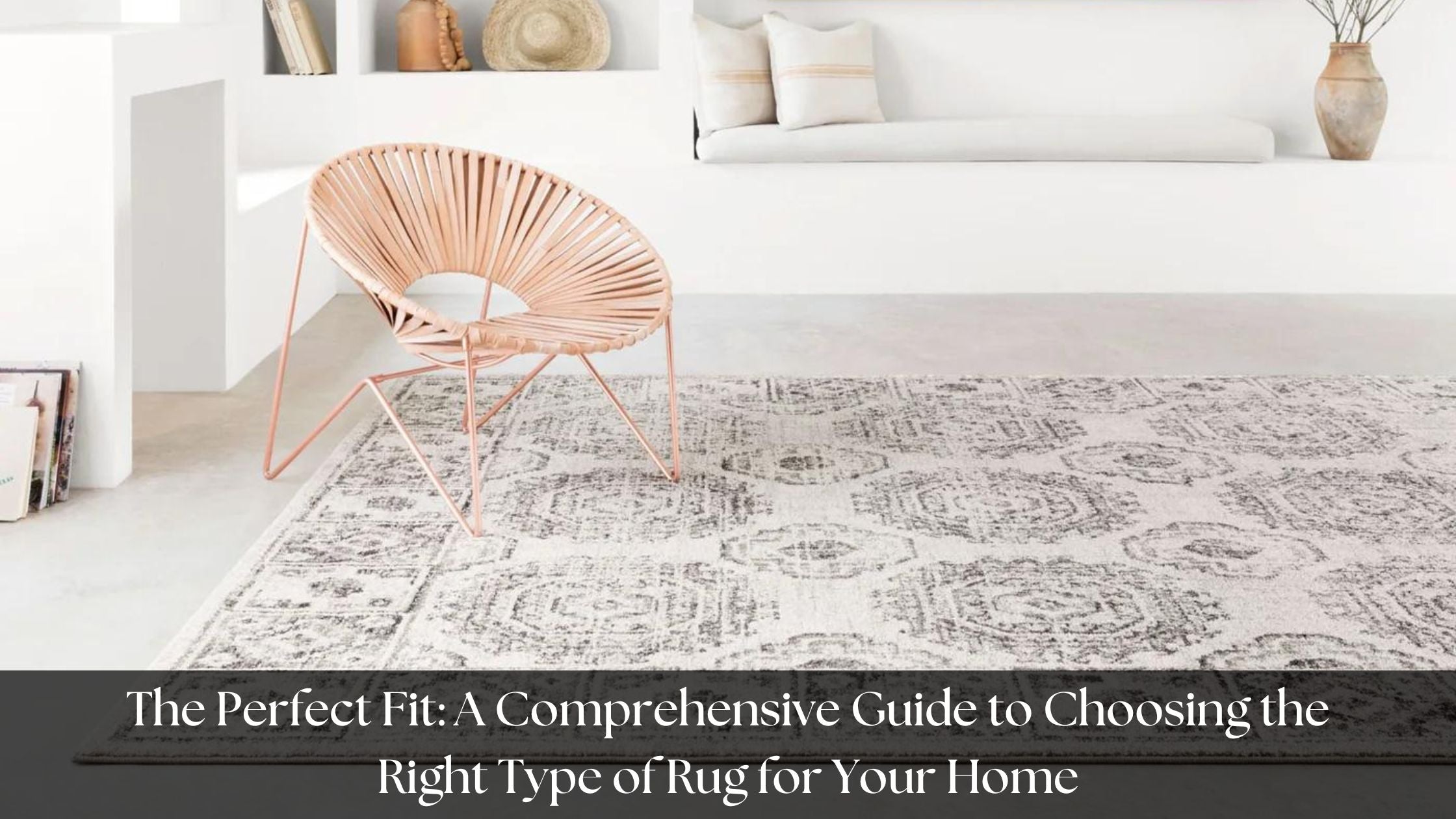A rug is that one piece of home decor that forms the foundation of any space and anchors the furniture. This is why choosing the right area rug is the key. A high-quality rug protects your floors, adds comfort and warmth, and is an excellent way to add a pop of colour and make a great design statement.
Shopping for a new area rug can be a little intimidating when choosing from the different sizes, styles, shapes, and materials.
The fibres used in a rug play a crucial role in how it looks, how stain-resistant it is, and how long it is likely to last. Truth be told, natural wool may be an excellent choice for quality and longevity. Nevertheless, synthetic fibres have the advantage of being affordable and offering a wide range of options.
In this article, the experts at The Rug District will focus on the most common materials to help you determine whether silk, wool, cotton, polyester, or something else is the right choice for an area rug for your home. We will discuss the different fibres used, their unique characteristics, and the spaces they are best suited for.
2023's Ultimate Rug Materials: Elevate Your Home's Style with These Top Picks
-
Wool
Wool is, hand down, one of the most commonly used fibres for rugs. It is an excellent choice for high-traffic areas like your dining room or living room, as it is highly resilient yet comfortable and soft. The properties of wool rugs allow them to be naturally dirt and water-repellant. The best part about wool rugs is that their fibres quickly bounce back to their original shape. They come in a range of different pile heights and styles and are usually combined with other fibres to curtail the cost of the rugs, as pure wool rugs can be pretty costly. Wool rugs are one of the oldest and most popular types of rugs. They can be hand-knotted, hand-tufted, hand-loomed, or machine-loomed when other synthetic fibres are added.

(Natura NAT620B)
-
Natural Fibers
Natural fibre rugs add an organic vibe and are an excellent way to add texture and warmth to a room. They are often affordable and are perfect layering rugs. To create an interesting visual effect, you can layer a jute rug under a wool or cotton rug, leaving nearly a foot-sized border around it to leave the jute visible. The only drawback of natural fibre rugs is that they start showing water marks pretty easily and can be a little tricky to clean. Sisal, jute, and seagrass rugs are the most common natural fibre rugs available in various sizes and shapes to suit different spaces. They tend to shed, and sisal rugs usually have a cotton border around them to prevent fraying. Natural fibre rugs are a classic choice that works with different interior styles, ranging from farmhouse to coastal. They are an excellent option for a hallway runner, as a neutral living room area rug, or under a breakfast room table.

(Natural Fiber NF212G)
-
Cotton
Cotton rugs are comfortable and soft, and usually easy on the pocket. It is a beautiful choice of material for a space like an entryway, bathroom, or kitchen, where you know you will often have to replace the rug because of the high volume of use. Cotton rugs are usually machine-washable for convenience and are best placed in a space that does not get direct sunlight as they tend to fade quickly.
Entryway runners and kitchen runner rugs are usually made from cotton for easy maintenance and to make their replacement affordable. From stripes to solid colours and other intricate patterns, endless versions and styles are available on the market. Make sure you use a rug pad under your cotton rug or runner to keep it in place and offer a more comfortable walking surface.

(Newport NPT423A)
4. Silk
Silk rugs are the pinnacle of luxury, and the credit goes to their soft, delicate quality. Silk is the best rug material for high-end carpets. Like rugs and carpets, this material has a satiny, subtle sheen and allows stunning, intricate details to show. Silk works exceptionally well as a home decor piece in low-traffic areas such as the bedroom since they can be high-maintenance.

(Madison MAD600C)
-
Manmade Rug Materials
Synthetic rug materials such as nylon, viscose, polyester, and polypropylene rugs replicate the look and feel of natural materials. These artificial materials are highly durable, affordable, easy to clean, workable, and stain-resistant.

(Invista 400 INV432A Cream / Grey)
How to Choose the Right Rug Material
There is no definitive answer as to which material you should choose for your rug, as it depends on a variety of factors. Some of them are as follows:
1. Where You Plan to Place Your Rug
Your rug selection has a lot to do with where you will be placing it. Where you place your rug will establish how much use it will get in terms of foot traffic. For instance, placing a costly wool or silk rug in the entry may not be a good idea. Nevertheless, these will add an exceptionally luxurious look to a particular part of your living room or bedroom.
Cotton rugs, on the other hand, may feel less soft underfoot, but they will last long in high-traffic areas. Polyester rugs are also excellent for high-traffic areas such as your living or dining rooms.

-
How the Rug Will be Used
What kind of use will your area rug be subjected to? Is it in a high-traffic or low-traffic area? Will children and pets also be using it? If your area rug is subjected to rough use, you should consider a polypropylene rug with high durability. On the other hand, if your rug is used in spaces subjected to moisture, you should definitely consider a mildew-resistant synthetic material like acrylic.
-
The Desired Look and Feel of the Rug
What type of vibe and look are you planning to create? This will determine where and how you want to use your area rug. While synthetic fibres such as polyester and polypropylene offer a wide range of colours and textures, the feel and look of a natural fibre rug will undoubtedly be different.

-
Quality of the Rug
The critical thing to consider is the kind of quality you are looking for. Do you want your rug to retain its value over a period of time? If yes, you will be better off with a silk or wool area rug. If longevity and high quality are not a concern, then you can go for rugs in less costly natural fibres such as jute or cotton rugs. You can also go with the endless variety of synthetic fibres like acrylic, nylon, and polypropylene.
-
Budget
You must always keep your budget in mind. Are you planning to invest a good amount of money in a quality rug? Natural fibres like silk or wool can cost you significantly more than polyester or polypropylene rugs. Synthetic fibre would be the best choice if you only need an aesthetic floor covering and are not going after premium quality at the moment.

Shop the Best Quality Area Rugs in Canada at The Rug District Now
Now that you know all about the types of materials and which one to choose in certain areas, we are sure you are all set to make your purchase. We offer a massive selection of area rugs ranging from basic polyester and cotton to premium quality wool rugs, significantly differing in price. However, with our discounts and offers, we are sure you will be able to achieve a luxurious look in your home with our rather costly rugs like wool or silk rugs.
For the best quality area rugs in Canada, we assure you that The Rug District is your tried-and-true destination. Shop now for all your area rug needs!











